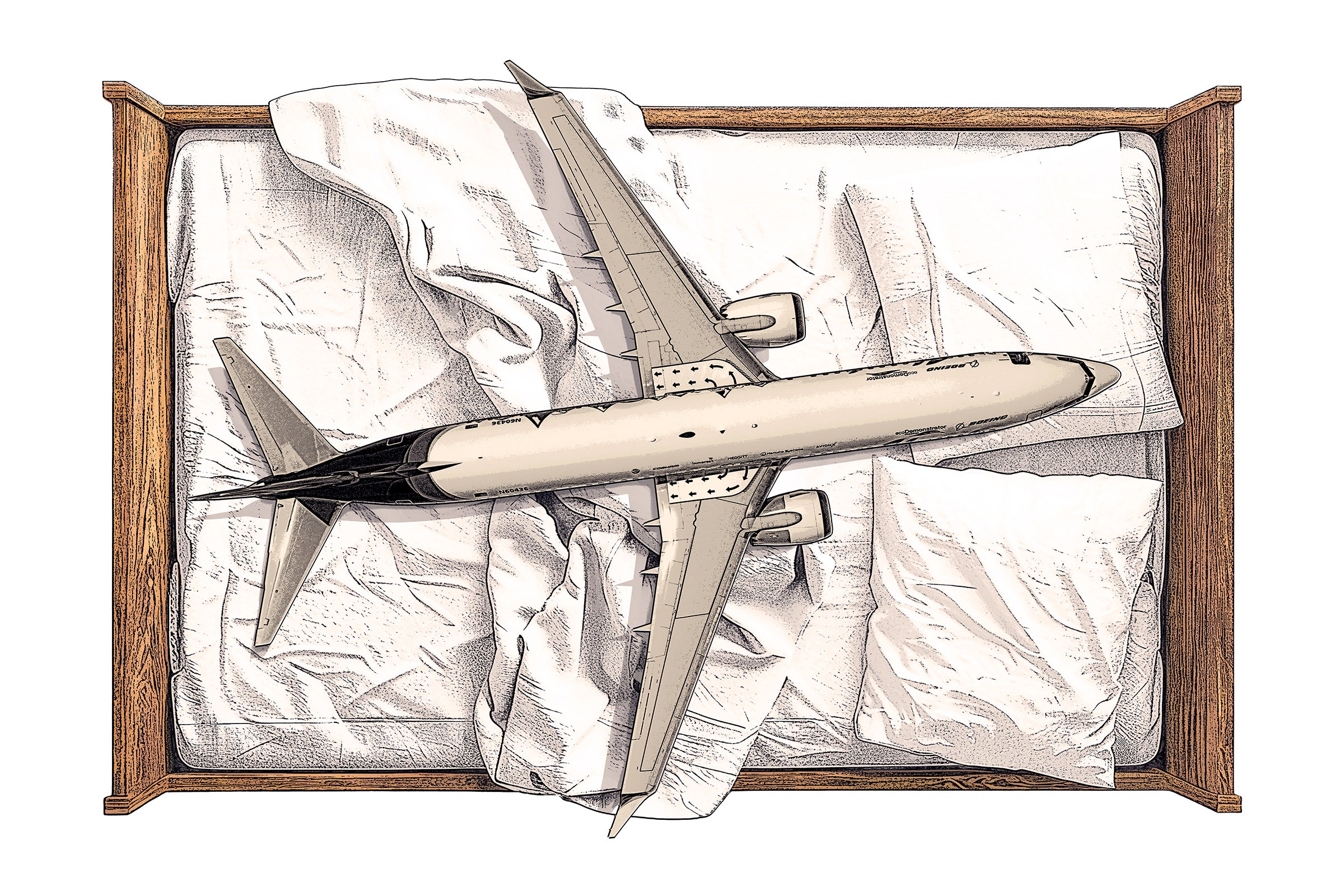We’ve all been there after a long trip—staring blankly at emails, counting the hours until bed. Yet when 2 am hits, you’re still wide awake, mindlessly scrolling through Instagram, trapped in the grip of jet lag. That’s the price for crossing time zones too fast.
Our internal clock, or circadian rhythm, governs everything from sleep to digestion to hormones and uses light to maintain its natural 24-hour cycle. But when we land in a new time zone, and day suddenly turns to night, this rhythm is thrown off balance. Most travelers adjust within a few days, perhaps with the help of a melatonin pill. But in the meantime, jet lag affects sleep, mood, and metabolism.
A complete cure for jet lag is unlikely, but scientists have found ways to help our bodies keep up. “Even reducing jet lag by a day improves the productivity and well-being of so many people,” says Svetlana Postnova, a professor of neurophysics at the University of Sydney, speaking from over 10,000 miles and 10 time zones away.
Since 2015, Postnova has worked with Australian airline Qantas, which is set to launch the world’s longest flights in 2027, connecting Sydney to both London and New York, nonstop. These 19- to 22-hour journeys will offer passengers an unusual experience: two sunrises on a single trip. Or at least that’s what it should look like inside the cabin. This is where Postnova’s expertise comes in. “The timing of lights is key,” she says.
On long-haul flights, airlines typically serve meals shortly after take-off and before landing, keeping the cabin dark in between to give passengers a chance to rest. But ultra-long-haul travel presents new challenges. Sitting in darkness for most of a 22-hour flight wouldn’t just be dull, it would make adjusting to a new time zone even harder, Postnova explains.
Before Qantas launched its 17-hour Perth-to-London route in 2018, Postnova’s team helped fine-tune lighting and meal schedules to help passengers align their body clocks. For the upcoming flights, they’re going further—experimenting not just with timing but with different light colors. “If it were up to scientists like me who want to minimize jet lag, we’d flood the cabin with bright white light,” says Postnova. “But that would upset a lot of people.”
Instead, they’ve created 12 lighting scenes, including a sunrise simulation that moves gradually from the front to the back of the cabin. One key setting is the “awake” mode, a blue-enriched light designed to help passengers stay awake at the right times. “Blue light has a much stronger effect on our circadian clocks than, say, green or red,” says Postnova. Hence the common advice to avoid screens before bed.
The best strategy? Tricking yourself into a new rhythm, even in the days before travel. There are apps to help with this, of course. Timeshifter, developed by a neuroscientist and his team, suggests a personalized schedule for light exposure and sleep based on flight itineraries. For my recent trip from Mexico to Switzerland, the app advised wearing sunglasses at the airport before departure, sleeping through dinner on the flight, and going straight to bed upon arrival. If only I had known before takeoff.
But jet lag isn’t just about light exposure and sleep. While the brain is our master clock, other tissues like the liver and muscles have their own clocks that regulate metabolism, the body’s process of turning food into energy. A 2024 experiment from the University of Surrey and the University of Aberdeen found that metabolism recovers from jet lag faster than the brain. The researchers simulated a transatlantic flight by delaying participants’ bedtimes by five hours while controlling their food intake in a lab. “We wanted to see if meal timing could prepare the body for jet lag or shift work, in the same way that people use light and melatonin,” says lead author Jonathan Johnston, a professor of chronobiology and integrative physiology at the University of Surrey.
Over five days, blood tests showed that while participants felt groggy, their metabolism bounced back much quicker than their levels of melatonin, the hormone associated with sleep. This suggests meal timing and composition could also be key to reducing jet lag, Johnston explains. “It would be fantastic if we could come up with a single strategy to help synchronize all of people’s clocks.”
Translating such lab experiments to the real world comes with logistical and ethical challenges. “You can’t just take a plane full of people or recruit people and put them on a strict schedule,” says Johnston. And even if meals were set, there’s no guarantee passengers won’t sneak in a late snack.
To test the effectiveness of light interventions, Postnova and her team have found a pragmatic approach. Select Qantas passengers, in exchange for frequent flyer points, wear wristbands that monitor their movements, light exposure, skin temperature, and glucose levels. They also provide feedback on their sleep patterns and overall well-being through questionnaires for 10 days following the flight. “We can design scenarios in the lab or models based on desired effects,” says Postnova. “But in reality, there are lots of things that come into play, and people have different rhythms.”
So, while we don’t yet have a way to comprehensively avoid jet lag, at least researchers and airlines aren’t asleep on the job in their hunt for a cure.




